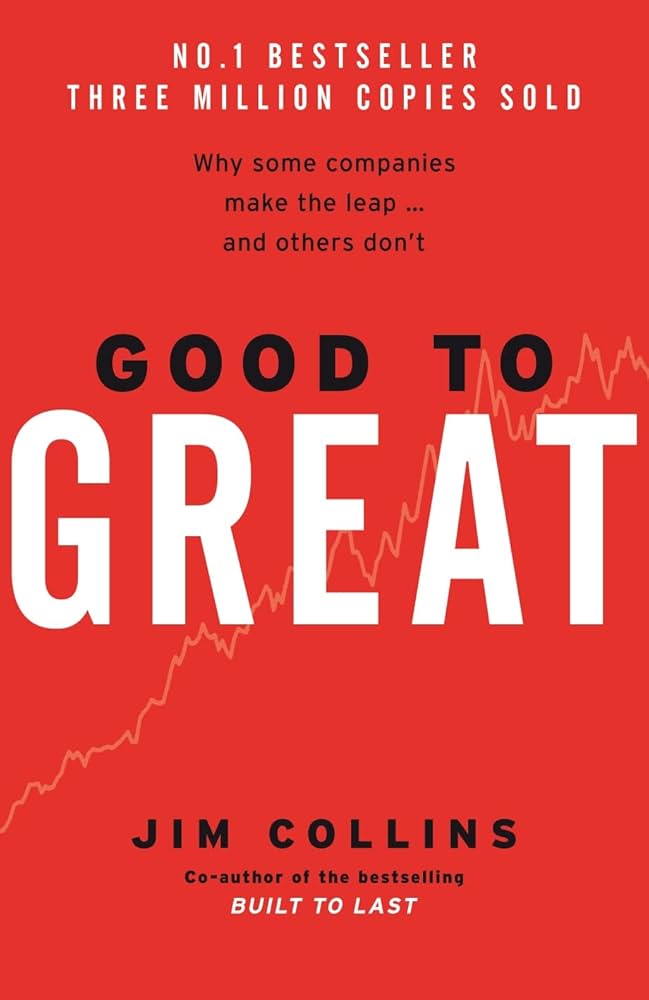
Review
This is one of the great business strategy books, and it holds up relatively well. I think the real value here is in the research. This is a systematic approach to studying what’s worked across some of the worlds best companies. Full of actionable advice too.
Key Takeaways
The 20% that gave me 80% of the value:
The Good to Great Framework
Stage 1: Disciplined people
- Level 5 leaders:
- Personal humility and indomitable will
- Ambitious for the company.
- First who, then what:
- Get the right people on the bus. You can’t predict the future, your best strategy is therefore to have a busload of great people who can adapt
Stage 2: Disciplined thought
- Reject the tyranny of the OR and embrace the genius of the AND
- Creativity AND discipline
- Freedom AND responsibility
- Confront the brutal facts (the Stockdale Paradox)
- Retain absolute faith you can will prevail in the end, regardless of the difficulties and at the same time exercise the discipline to confront the most brutal facts about your current reality
- The hedgehog concept. Be fanatically disciplined about making decisions through a lens of…
- What you’re deeply passionate about?
- What you can be the best in the world at?
- What drives your economic or resource engine?
Stage 3: Disciplined action
- The Flywheel
- There’s no silver bullet to move you from good to great
- The process is more like relentlessly pushing on a giant heavy flywheel, to build momentum
- To maximize the effect you must understand how your flywheel turns
- 20 Mile March
- Self-impose performance goals
- March with relentlessly consistency (20 miles a day)
- The march imposes order and discipline
- Must have a short-term focus and long-term building.
- Disciplined action
- Fire bullets, then cannonball
- Scale innovation by turning small proven ideas (bullets) into huge successes (cannonballs)
- Fire bullets to figure out what works, calibrate your line of sight
- Once validated, concentrate resources on the calibrated line of sight
Stage 4: Building to last
- Productive Paranoia
- You can only learn from mistakes you survive
- Obsessively ask “what if?”
- Prepare ahead of time, build reserves, have a margin of safety, bound risk and hone discipline
- 5 Stages of decline:
- Hubris born of success
- Undisciplined pursuit of more
- Denial of risk and peril
- Grasping for salvation
- Capitulation to irrelevance or death
- Clock building, not time telling
- Leading as a charismatic visionary is time telling
- Shaping a culture that can thrive far beyond any single leader is clock building
- Don’t base your business on a single insight.
- An organization proves it’s greatness across multiple leaders
- Preserve the core / stimulate progress
- Maintain timeless core values and core purpose (that never changes)
- Have a relentless drive for progress, change, improvement, innovation and renewal (to relentlessly adapt)
- Maintain the drive for progress with Big Hairy Audacious Goals (BHAGs)
The 10x Multiplier
- Return on luck amplifies all the other principles
- The best companies get a higher return on luck.
- What will you do with the luck that you get?
The Outputs of Greatness
- Superior results in business performance (mostly financial results)
- Distinctive impact: making a unique contribution to communities.
- Lasting endurance: prospers over a long period of time, beyond any great idea